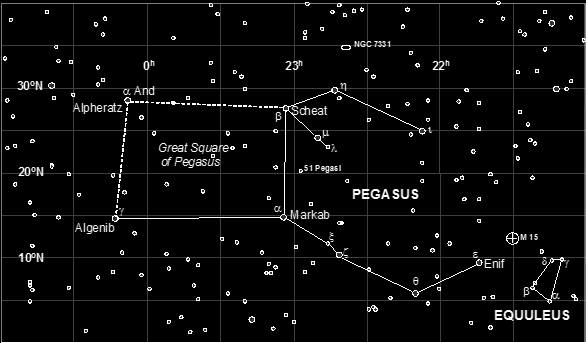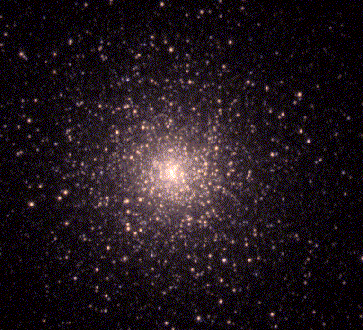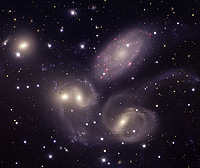Pegasus and Equuleus
The Great Square, formed by the stars Alpheratz, Scheat, Markab and Algenib is the most noticeable naked eye feature of Pegasus and one of the most famous of all asterisms, although Alpheratz in fact belongs to the neighbouring constellation of Andromeda. Pegasus represents the famous flying horse of Greek mythology but despite its antiquity and size is not particularly well endowed with deep sky objects. It does however possess a very fine globular cluster in M15 which can be found close to Enif, the constellation’s brightest star. NGC7331 is a spiral galaxy probably similar in size and type to our own Milky Way. It is a fairly easy object for small telescopes and also acts as a marker for the much more challenging “Stephan’s Quintet” a distant system of interacting galaxies. 51 Pegasi, an otherwise insignificant 5th magnitude member of the constellation is famous for being the first ordinary star, apart from our own Sun, around which planets were shown to be orbiting (1995).
Equuleus, (the “Little Horse”) is the second smallest constellation in the sky (after Crux) and contains no star brighter than the 4 th magnitude and no deep sky objects of note for amateurs. Surprisingly however it is one of the 48 original constellations listed in Ptolemy’s “Almagest”.

M15 Globular Cluster

Stephan's Quintet (NGC7317, NGC7318A,
NGC7318B, NGC7319, NGC7320)
POWERPOINT SLIDE SHOW (652 KB)